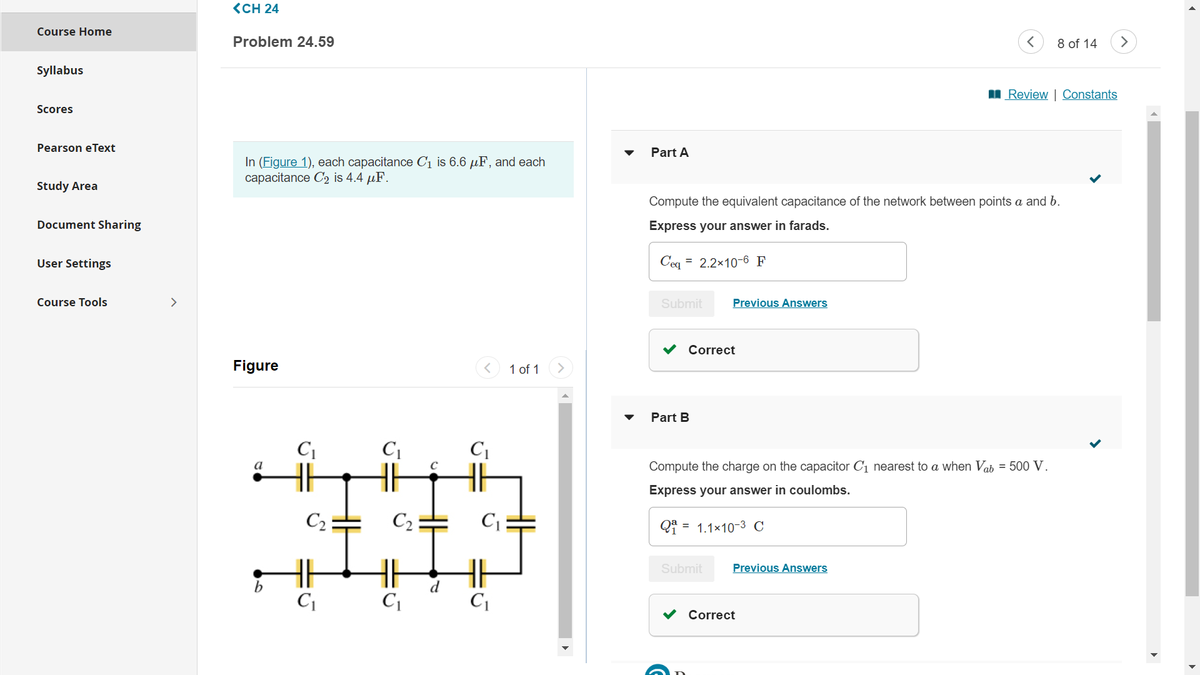Hello there. To start off, I AM BLIND AND CAN NOT READ IMAGES YOU MAY ATTEMPT TO RESPOND WITH. Please do not do that, it wastes your time and mine and would just like it written out in text like what you are reading right now. Thank you for understand.
Hello there. To start off, I AM BLIND AND CAN NOT READ IMAGES YOU MAY ATTEMPT TO RESPOND WITH. Please do not do that, it wastes your time and mine and would just like it written out in text like what you are reading right now. Thank you for understand.
So the question I am working on I have 1 part left and am not sure on how to calculate the final part.
THE DESCRIPTION TELLS ME :
A CIRCUIT INCLUDES 9 capacitors. The circuit has end points A and B. Capacitor C Capacitor C_1 is next to point A. Another capacitor c_1 is next to point B. Between these two capacitors, capacitor c_2 is connected parallel with the following combination. capacitor c_1 is between c_2 and point C. on the other side of c_2, another capacitor c_1 is between c_2 and point D.There are two parallel branches between points C and D. There is one more capacitor c_2 on the first branch, and there are three capacitors c_1 in series on the second branch.
that is it
The question goes:
|
In (Figure 1), each capacitance C1C1 is 6.6 μFμF, and each capacitance C2C2 is 4.4 μFμF.
Figure
1 of 1
|
Part APart complete
Compute the equivalent capacitance of the network between points aa and bb.
Express your answer in farads.
|

Trending now
This is a popular solution!
Step by step
Solved in 4 steps









